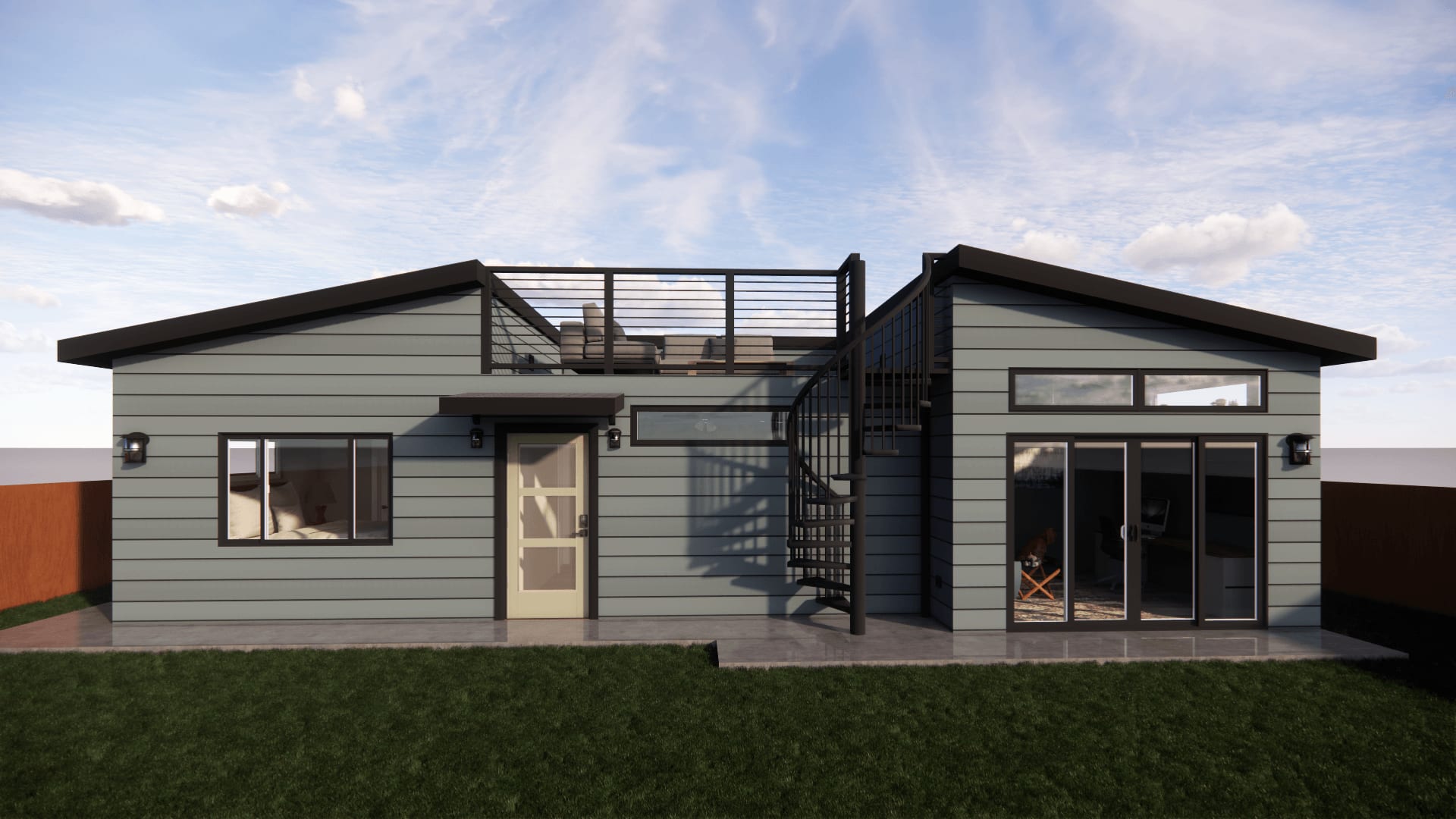
Homeowner’s Guide to San Diego ADUs
Photos from Murray Lampert Design Build Remodel
Originally Posted On: https://murraylampert.com/simple-homeowners-guide-to-san-diego-granny-flats/
This comprehensive guide provides everything you need to know about building an ADU in San Diego.
In-law Suites
This guide was originally published in August 2019. We will periodically update this guide with new information and insights as San Diego ADU costs, rules, and regulations continue to evolve.
The popularity of accessory dwelling units among homeowners in California has risen steadily since 2016. That trend is evident in space-strapped San Diego, where there have been at least 200 permitted ADUs for construction each of the past 3 years. Loosened regulations, simplified permitting processes, and increasing contractor experience are all contributing to the continuing popularity of accessory dwelling units throughout San Diego County.
Whether residents build in-law suites in San Diego or rental units onto their homes, it’s important to know the benefits and drawbacks of building a granny flat, as well as the ADU rules and regulations in San Diego.
Why Build an ADU in San Diego?
Southern California is seeing a huge rise in the popularity of accessory dwelling units – often referred to as “ADUs,” “granny flats,” “companion units,” or “in-law suites.” These living spaces can be attached or detached from your main dwelling, as long as there is a separate entrance and a few other amenities.
Communities and neighborhoods throughout San Diego County are following the state’s lead, and several municipalities are lowering and waiving ADU permit and inspection fees, as well as easing regulations to build accessory dwellings on owned property.
But what are the benefits of building a granny flat in San Diego? As with any home remodeling project, there are pros and cons to consider before building an in-law suite, but there are a handful of very compelling reasons why you should consider building an accessory dwelling unit in San Diego.
Rising Costs and Fewer Options
Homeowners in San Diego know that this area is an idyllic place to call home. Amazing year-round weather, tons of outdoor activities, a thriving craft beer and wine scene, and plentiful restaurants, bars, music venues, and family-friendly fun are just a few of the reasons that San Diego, known as “America’s Finest City”, is among the most desirable places to live in the United States.
Unfortunately, that popularity has played a significant role in San Diego’s housing shortage and steep cost of living. This cost of living is evident in both the rental, as well as the real estate markets. In 2021, average rent for a 1 bedroom apartment in San Diego rose 11% compared to 2020, while a 2 bedroom apartment saw average rents jump 17%. The median home price in San Diego County climbed by nearly 28% in 2021.
With the housing shortage leading to increased prices and fewer options, several city building ordinances are being changed to incentivize residential development. Some of these incentive are affordable housing density bonuses, reduced parking requirements and waived fees for accessory dwelling units, also known as granny flats.
Potential Rental Income
Since the housing market is on fire in San Diego, adding an ADU to your existing property as a rental unit can be a great investment – if it’s done thoughtfully and properly. Building a granny flat or ADU is a smart investment if:
- You plan to own the home long-term and can rent it for many years.
- You already own the land since the rent to cost ratio is very favorable.
- There’s no owner occupancy clause forcing you to stay on the property.
- You have home equity or access to capital to build or make improvements.
- Building a granny flat is a good lifestyle fit.
While current regulations prevent homeowners from offering accessory dwelling units as vacation rentals (ADUs have a minimum 30-day lease), short and long-term renting is definitely an option. A 500-square-foot ADU in San Diego can generally earn between $1,350 – $1,800 per month in rental income. That’s money that can be used to pay down your mortgage, cover utilities and other household expenses, save for retirement, or spend on a vacation.
Additional Space for Family and Friends
Hosting out-of-town relatives, taking in aging parents, or welcoming college-aged children back home are all cases in which homeowners will definitely require more space. An in-law suite provides a comfortable, separate space for visitors, family, or tenants. Better yet, your backyard is closer, cheaper, and more familiar than a hotel or Airbnb across town.
Homeowner-friendly Updates
San Diego continues to make significant changes that impact homeowners seeking to construct accessory dwelling units – many of them in positive ways. Some of those updates included:
- New Resources – City officials provide pre-approved ADU flat designs and instruction manuals to speed up construction.
- Wide-Ranging Fees – Location and granny flat type impacts fee costs. The fees range from $4,800 to over $80,000. The City of San Diego passed a waiver of development and impact fees, which saves local residents $17,000 on average.
- Fee Waivers – Encinitas homeowners who are building in-law suites up to 1,200 sq. ft can save approximately $3,500 in waived fees.
- Expanded ADU Size – In-law suites may be 1,200 sq. ft or 50% of the primary home’s size, whichever is less. This is up from 700 sq. ft. For example, if an existing house is 3,000 sq. ft, the attachment it can’t exceed 1,200 sq. ft in size.
- No Vacation Rentals – ADU rentals must have a minimum 30-day lease, which eliminates the granny flats from being used as short-term vacation rentals.
Planning, Designing, and Building an ADU in San Diego
ADU Planning
Once you’ve decided that adding an ADU to your property is the right move, consider whether you’re interested in building an entirely new structure from the ground up or if you’d rather upgrade an existing dwelling unit or other structure. There are endless ways to take advantage of new regulations and improve your property value for decades to come.
But before you start picking out curtains and cabinets, let’s start with the basics. The first big decision concerns the type of ADU to be built on your property. There are four main types of ADUs:
- Detached
- Attached
- Repurposed Existing
- Junior ADU
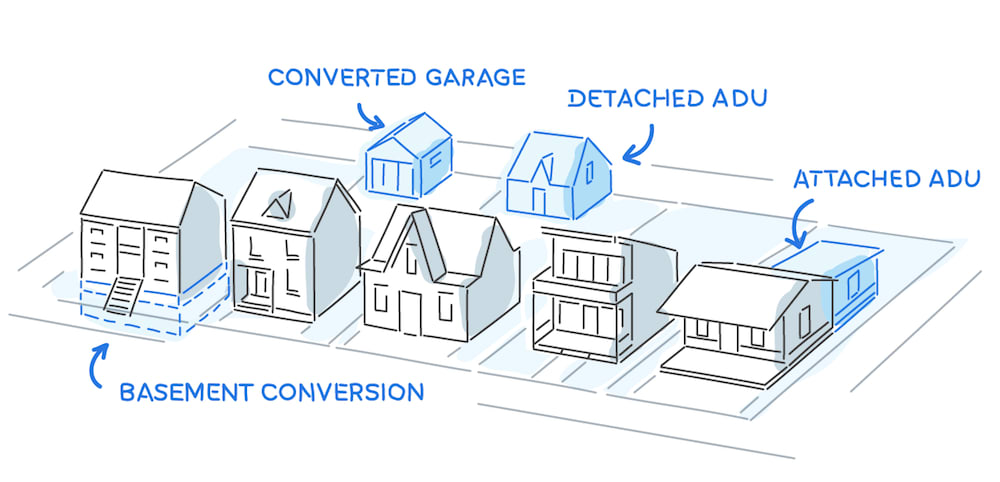
Detached units are standalone structures that are separated from the primary residence. An attached unit is built onto an existing residence and has its own private entrance, bath and kitchen. In many cases, this is the configuration you want if you plan to rent your in-law suite to a long-term boarder, since it maximizes both your privacy and theirs. However, you can also build an ADU adjoining your home, which is ideal if you plan to use this space for an elderly relative or additional living space. Above the garage, attics and basements fall under this category. An example of a repurposed existing unit is a garage conversion. This is a space within the primary house that’s converted into a unit for independent living.
Attached ADUs
The possible size of an attached granny flat is linked to the square footage of your main residence: your in-law suite cannot exceed 50% of the total floor area of your primary dwelling on the same property, and it cannot be bigger than 1,200 sq. ft.
For example, if the floor plan of your home is 2,000 sq. ft, your attached ADU cannot be larger than 1,000 sq. ft. You are able to design a smaller granny flat, of course, but that depends on your plans and the size of your lot. If your primary residence is 4,000 sq. ft, you are limited to an in-law suite of 1,200 sq. ft.
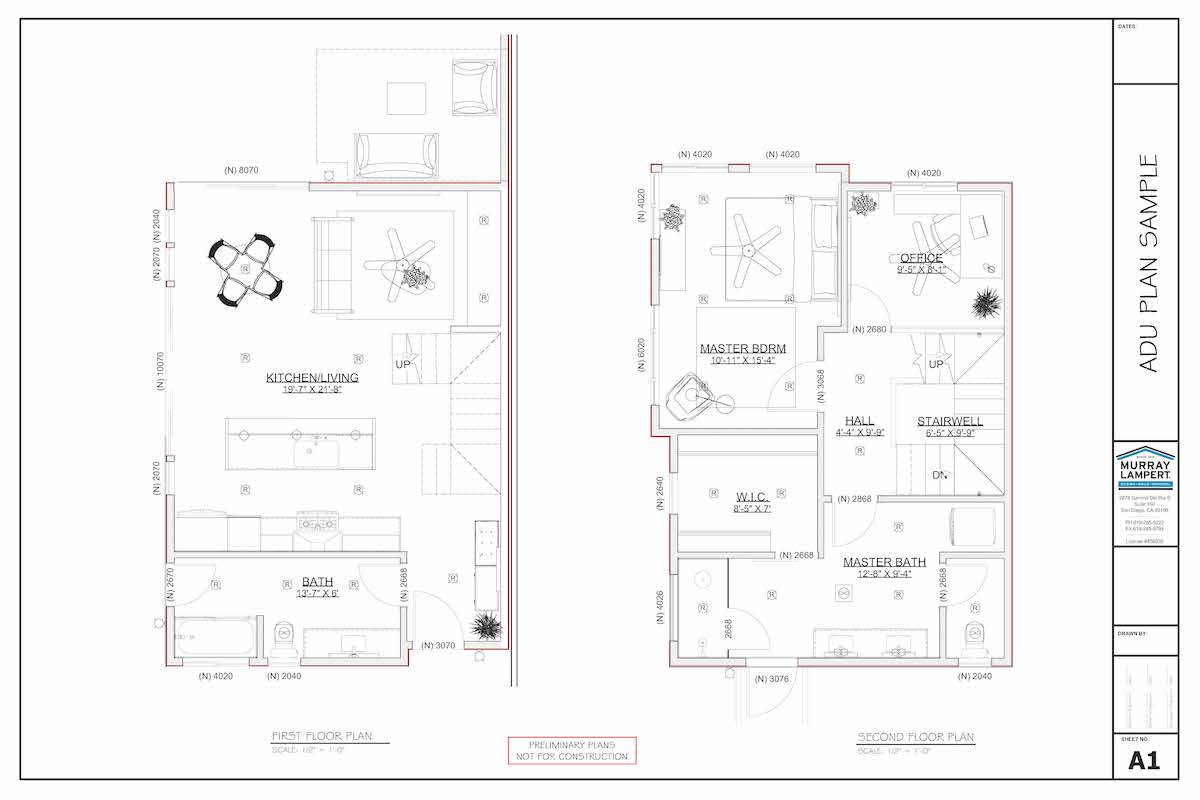
You must also provide an entrance distinct and separate from the main entrance to your house; ADUs are not considered additional rooms in your existing structure.
Detached ADUs
Detached granny flats also cannot exceed 1,200 sq. ft, but there are no rules that link the size of the floor plan to the square footage of the main building. Instead, you can choose whatever size footprint you want to meet your needs, as long as it doesn’t exceed 1,200 ft2. This option is especially alluring if you already own a detached garage or shed, and you want to enhance that structure with the addition of an in-law suite.
Repurposed Existing (Garage, Basement, etc. Conversion)
When a property is already outfitted with a garage or basement, property owners may choose to convert the entire structure or only part of it to an in-law suite. Either of these options are viable, as long as the square footage requirements are met, and the original floor plan does not change. In fact, it may be beneficial for you to add a second story to your garage and preserve the existing space the way it is. This is advantageous to homeowners who want to maintain their garage and yard space but still want to add living space to their property. Keep in mind that some additional requirements may apply like sound attenuation, fire resistant construction, and separate utility shut-offs.
Junior Accessory Dwelling Units (JADUs)
As the name suggests, JADUs are smaller versions of ADUS (maximum 500 sq.ft), but with a few other specific differences. JADUs are contained entirely within an existing or attached structure (e.g. a garage), and can share sanitation facilities with the primary dwelling. These smaller units typically feature an independent efficiency kitchen, and also require a separate entrance from the primary dwelling.
RequirementsADUJADUMax Unit SizeGenerally up to 1,200 sq. ft or 50% of living area500 sq. ft maxKitchenYesYesBathroomYesNo. Common sanitation allowed.Separate EntranceDependsYesParkingDepends. Parking may be eliminated and cannot be required under specific conditions.No. Parking cannot be required.Owner OccupancyDepends. Owner occupancy on most ADUs has been waived from 2020-2025Yes. Owner occupancy required.Ministerial Approval ProcessYesYesProhibition on Sale of ADUYesYes
Table Data Source: https://www.housable.com/adu-guides/adu-jadu-difference
ADU Designing and Building
Hiring an Architect versus a Design-Build Firm
As you do your research and learn about building your granny flat in San Diego, you may decide that hiring a professional is the right choice for you. But what type of professional should you pick? You can take the scenic route and hire an architect to draw up the plans, then choose a contractor to do the work, and then pick a designer to put the finishing touches on the interior. Or, you can save yourself time, anxiety, and additional hassle of managing multiple contractors by hiring a design-build firm that does all of this in-house.
The design-build method is rapidly becoming the primary model for construction projects in the United States, outpacing architecture-led projects due to the efficient cost model, single point of contact, and cohesive team mentality. An architect can add thousands of dollars to a project, and they may require a percentage of the cost of the construction if you want them to oversee the work. Of course, the other option is to do the work yourself.
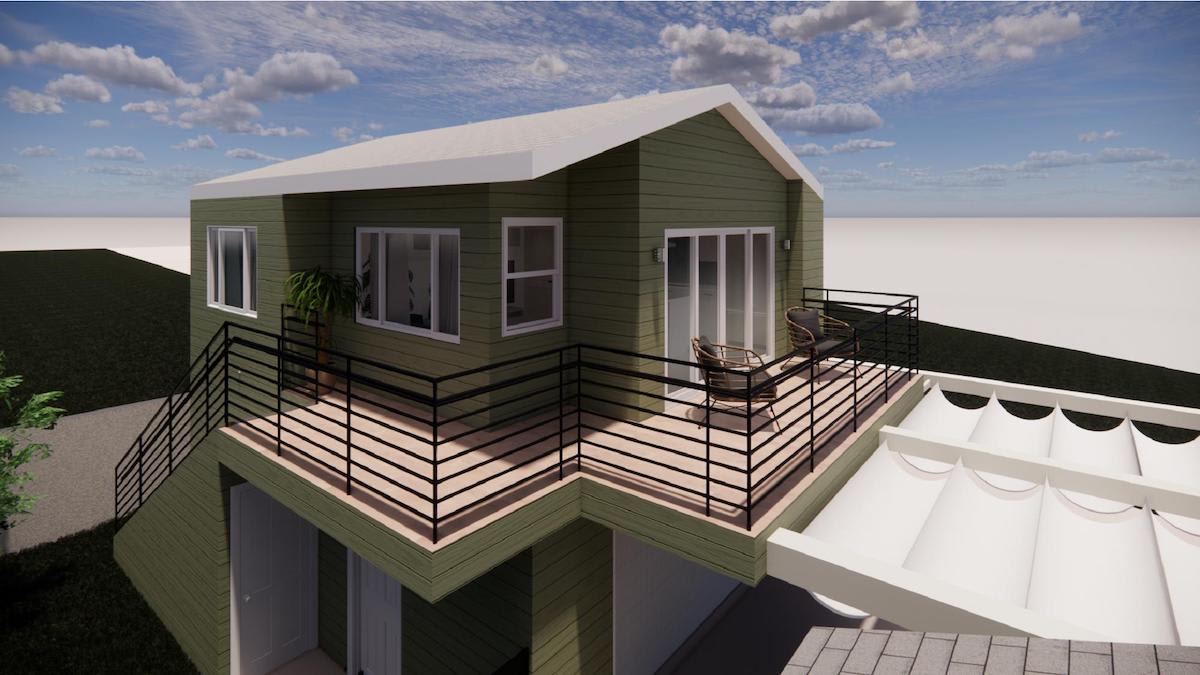
DIY versus Hiring a Pro
If you decide to put your DIY acumen to the test, take heed of these warnings by the city of San Diego before you begin; the risk you carry is high.
The city will not issue a building permit until you first complete the Owner-Builder Declaration Form, which heaps liability onto you for choosing not to commission a licensed contractor. You may need to procure additional liability insurance, course of construction and assume responsibility for making sure all trades carry workers compensation coverage.
Moreover, if anyone helps you with this construction, and your entire project costs more than $500, you are considered an employer by state law. This is significant because you must register for an EIN with the federal and California governments, withhold taxes, provide disability insurance, and pay unemployment. Failure to abide by these rules will cost you – much more than you may be willing to pay.
Most importantly, the work you do building or upgrading your ADU will follow you years into the future. If you sell the property one day and the next owner is injured by your faulty workmanship or poor quality materials, you could be liable for those damages. As an “owner-builder,” you’re also on the hook financially for any mistakes in workmanship or material ordering. If you decide to hire a design-build firm to handle this project for you, they will take care of the permits, the liability, and the stress.
San Diego ADU Zoning and Regulations
Property Qualifications
ADUs can be built on property that is zoned for either single-family or multi-family residences (depending on the local regulations). It’s best to check with the City before building on the land. Additionally, to obtain a permit for a lot, it must be free of code violations. Here are a few additional facts worth noting:
- San Diego ADUs are always rentable, but in most cases these units can’t be sold separately from the primary home.
- ADUs only require a fire sprinkler system when it’s required for the main residence.
- Owner-occupancy isn’t necessary for renting either primary homes or ADUs, unless you live in San Diego County.
- Existing structures converted to Companion Units aren’t subject to water or sewer charges when it has the correct meter size.
Setbacks
Every structure must maintain a specific distance from a property line, curb or structure within a building. This is done for the purposes of environmental protection, privacy and public safety. For ADUs, San Diego allows encroachment of the side and rear yard setbacks. Only compliance with typical front yard setback is required. In the case of a two-story granny flat, it must be situated five feet from the rear and side lot lines. However, existing permitted garages are exempt from this requirement.
Parking
Parking accommodations is another matter you must factor into your construction. San Diego parking regulations require that newly built granny flats provide .5 space for each bedroom, whether it’s an area in the driveway or tandem parking. If you design and build a new secondary dwelling, you must also add one parking space to account for the new living space. No replacement parking is required for garage conversions. In transit zones, additional parking may not be required as well.
Newly created parking spaces must measure at 8.5 feet by 18 feet.
However, there are some exceptions to this rule. You do not need to provide a parking space for your granny flat if:
- Your property is within one half-mile of the MTS, a Breeze bus, waterfront shuttles or any other public transportation.
- Your property is within the boundaries of an historic district.
- Your property is located within a residential parking district.
- Your property is located within one block of a car or bike share station.
- Your companion unit is less than 500 sq. ft in floor area.
Zoning Info
San Diego’s city government maintains a very easy-to-read and comprehensive website replete with guides, tips, downloadable applications, and contact information. For the most efficient citizens who can’t wait to get started remodeling their granny flats, the building division office provides average wait times by the hour for each day of the week.
In any city, zoning regulations are often extensive and complex. San Diego’s zoning ordinance is published online, and it is recommended that you familiarize yourself with the sections most relevant to you. But if you don’t have time to peruse even the introductory section (at 102 pages of technical language, it’s not a casual read) you can contact the building division directly. Of course, you should contact your designer or builder for support as well.
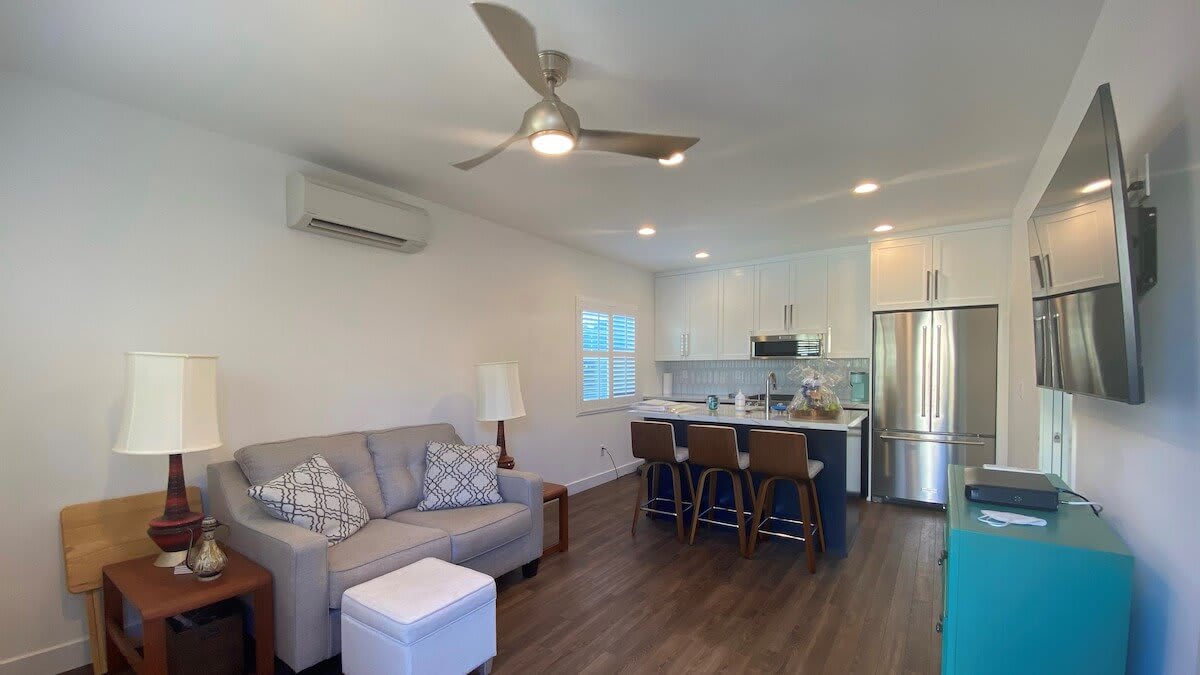
ADU Costs, Fees, and Financing in San Diego
General costs to design and build an ADU in San Diego
- Small ADU: (200 – 600 sq.ft.) = $150,000 to $250,000
- Large ADU: (600 – 1,200 sq.ft.) = $250,000 to $350,000
There are usually additional fees associated with building an ADU that vary by city. These fees include licenses, taxes, utility fees & upgrades, city required upgrades such as sidewalks and driveways, etc.
As an example, a recent 1,200 square foot detached ADU that Murray Lampert built for a homeowner in Point Loma had fees totalling around $3,500.
In addition to the design and construction costs of a companion unit in San Diego, the city imposes several fees and taxes, which can change year-to-year. For fiscal year 2021-2022, the city requires the following fees for accessory dwelling units:
- Plan Review Fee: $1,565 + $0.331/sq. ft
- Permit Fee: $1,287 + $0.433/sq. ft
These fees each have a base cost plus an additional cost depending on the size of your ADU. Therefore, you will pay ~$0.33 cents per square foot extra for a plan review, and ~$0.43 cents per square foot extra for the permit itself. For example, if your granny flat is 500 sq. ft, you will pay ~$165 on top of the base fee of $1,565 for a plan review, and ~$215 on top of the base fee of $1,287 for the permit.
In this scenario, your total cost would be around $3,232 for the plan review and permit of a 500 sq. ft accessory dwelling unit.
Permits have a built-in expiration date, and require renewal after a predetermined amount of time. Permits also typically require inspections every 180 days, although exceptions are being made during COVID to extend timelines on permits.
ADU Taxes
In San Diego, taxes cannot increase more than 2% annually. However, your property will be reassessed when your new construction is complete, just as it was when you first purchased the home. Since adding an ADU to your property will increase its value, you can expect your taxes to increase as well.
Additionally, you’ll want to factor in school fees for ADUs of 500 sq. ft or larger, which run approximately $4.00/sq. ft.
ADU Financing
You can obviously pay cash to build your new in-law suite. However, there are some great low-interest construction and home improvement loans to finance your project. Most architects and general contractors typically don’t have the resources to assist with financing. In other cases, well-established design-build remodeling firms can help with the entire package. You can also check with your personal financial institution or credit union.
As a homeowner, you’re probably familiar with interest rates. A home equity loan is a popular choice among San Diegans looking to build an ADU on their property. There are numerous financial institutions (major banks, online lenders, and credit unions) that offer a variety of rates and options for financing your granny flat. Many banks also offer personal loans, and savvy homeowners can consolidate and refinance these personal loans into one mortgage with a good interest rate when the accessory dwelling unit is complete.
Furthermore, If you are 62 years of age or older, you are eligible to take out a reverse mortgage against your home equity. It is widely recommended that you thoroughly research this option before you decide on getting a reverse mortgage to finance your ADU.
What Else Can I Do With My ADU?
Alternative Uses for an ADU
Not all San Diegans build an ADU on their property to earn an income or house family and friends. In fact, many residents who build a granny flat to house family members and friends eventually decide to redesign this space when it’s no longer used for this purpose. But not everybody is interested in having tenants living on their property.
Consider this: upgrade your ADU into a home gym. You can reap the benefits of daily exercise in the peace and quiet of your own home; and with these features included in your remodel, you may end up moving in full-time.
Your Gym, Your Way
Not all people exercise and train the same way. Some of us prefer high-intensity resistance training with weights and barbells; others prefer endurance and cardio training. And let’s not forget those of us who prefer a calm environment for yoga, pilates, barre or other body weight movements. There are thousands of design ideas available online no matter what type of workout oasis you want to build. Here are a few to consider as you redesign your ADU to accommodate a home gym:
- Concrete Walls – If you’ve ever tried to mount a TV on drywall, you already know why you need concrete walls to hang heavy barbells, weights, medicine balls or pull-up bars. Concrete walls give you the opportunity to use the wall itself as a fitness element.
- Glass Exterior Walls – Conversely, you may decide that you prefer a view as you ride your Peloton or jog on your True Form. With tempered glass walls, you can maintain the security of your building without feeling confined to a box.
- Foam or Rubber floors – Whether you intend to drop heavy weights or stretch out in bridge pose, you need to consider what type of flooring will give you the best combination of utility and aesthetics. This is an easy DIY project; even Home Depot carries interlocking mats that you can install yourself.
- Surround Sound – Look to Bose or Sonos for the highest quality home gym surround sound systems. By placing Bluetooth speakers strategically around your fitness area, your tunes will follow you wherever your workout takes you.
Adding Self-Care & Universal Living Elements
If you are building an ADU for a senior loved one or the physically challenged, universal living features can easily be incorporated into the plan. Even if the parties who will be living in the ADU don’t need these features right now, it’s easy to plan ahead.
Here are a few common universal living features to consider:
- Grab bars in the bathing and toilet area. There are great decorative options that are appealing. If nothing else, make sure to have the builder provide blocking in those areas for future, even if you don’t install the fixtures now.
- Zero transition stall shower pans have become very popular in everyday design. For seniors, a seamless entry to the shower is a great safety feature.
- Wider doorways is another important design consideration for aging in place or for wheelchair access. In new builds or major remodels, the cost is minimal. A little more space for seniors to maneuver around can be valuable later.
- Ramped entries and walks with no steps are another safety feature to consider for seniors or the physically challenged. In a new build, the hardscape can be ramped to entry, garage and sliding doors for seamless access.
- Kitchen and bathroom sinks with skirted fronts that are open below are ideal for those in wheelchairs.
An ADU in San Diego must include a kitchen (sink, range, and refrigerator), bedroom, and bathroom. When you convert your granny flat into a workout studio, you can intentionally upgrade these elements to support your health and wellness.
Install sound-dampening panels or insulation in the bedroom to control exterior noise so you can get a deep post-workout rest. Add a natural stone shower and a corner bathtub to your bathroom to help you relax and recover. Depending on the layout of your ADU, you could add an island to increase your counter and storage space. Contemporary kitchen islands are chock-full of gadgets and technology, too; height-adjustable counters, secret spaces to hide your appliances, and even touch screens embedded in smooth surfaces.
Building a Smart, Sustainable ADU
Go Solar
San Diego is ranked second in the United States in total installed solar PV. With all this sunshine, why not take advantage of the long-term cost savings? And now that you have a granny flat in your backyard, you have even more roof capacity to accommodate photovoltaic cells (or PV cells), which are commonly called “solar panels.”
Costs: Fees, Permits, and More
The city of San Diego is currently waiving the cost of checking plans and issuing building permits to install photovoltaic cells on your property. There is one stipulation, according to the city’s website: “Fees for residential solar PV building permits could be incurred if the Department of Environmental Health and/or the Department of Public Works need to review the building plans. This is typically only required for ground mount solar PV.”
Savings: Calculate What You Can Save
We all know that supporting renewable energy providers is a good investment for the globe and the Southern California environment, but making the switch to solar can also be good for your bank account. While the up-front cost can be high, homeowners can expect to earn back what they’ve spent, and many even make money long-term. San Diego has partnered with several banks to provide options to homeowners who want better terms than you’d normally get with a home equity loan.
There are many factors to consider when deciding whether or not to install solar panels on your property. For example:
- Can you afford to install solar panels? Can you acquire a home improvement loan to cover your new granny flat installation as well as a photovoltaic system?
- Will you install PV cells on your roof, or somewhere else on your property?
- Is your property in full view of the sun, or do trees or other topographic elements get in the way?
- Is your available roof space (more if you include your granny flat) enough to accommodate an adequate number of solar panels to make your investment worthwhile?
Talk to your solar installer or your design-build team to find out what other factors you need to consider. If you want to be prepared for a conversation about financing, there are many cost estimators available online to help you determine the cost of purchasing the system as well as your energy savings over the life of the cells.
ADU Automation
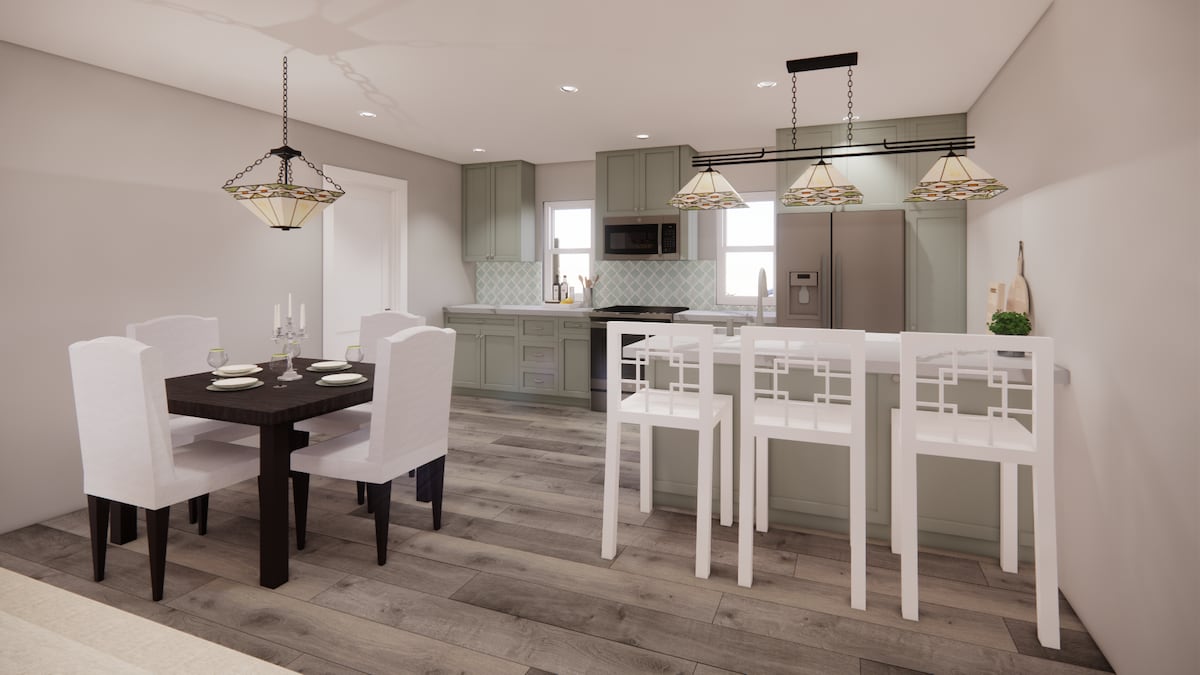
Upgrading your ADU in small ways can have a big impact on not only your day-to-day living, but the amount you can earn from renting your granny flat to a tenant or boarder. Once your ADU is designed and built, consider adding these easy tech projects to your DIY list.
Smart Power Outlets
Only a handful of people reading this might remember a time when power outlets only accepted 2-prong plugs. Now, power outlets have advanced way beyond the need for traditional pronged plugs; instead, you can plug USB cords directly into wall outlets to charge all your handheld devices. Or, if you are searching for a more autonomous home, look for (or ask Google or Amazon to look for you) a smart-outlet that you control with your smartphone.
Smart Circuit Breakers
As with old 2-prong wall outlets, gone are the antiquated fuse boxes that were once ubiquitous in homes across the country. Circuit breakers replaced fuse boxes, which removed the need to install fuses and instead relied on electromagnetism to prevent power overload. Now, the next step in electrical control is here: [smart circuit breaker(https://www.economist.com/science-and-technology/2017/11/23/smart-circuit-breakers-for-energy-efficient-homess]. You can also monitor and control these home automation devices via your smartphone. You can cut the power to your granny flat to save money, monitor the power consumption of your ADU to help determine cost of utilities for tenants, or predict your upcoming electric bills.
Smart Doorbells
Remember when you had to creep up to the front door and peek through the peephole without making a sound just to see who was knocking? Now you can see your visitors in glorious high-definition from wherever you are in the world. With devices like Ring and Google Nest, you can see, hear, and interact with people at your front door. This is an ideal choice for semi-empty-nesters whose grown children have relocated into the granny flat in the back – next time they Uber home and forget their keys, you can let them in without leaving the comfort of your bed.
Motion Sensors and LEDs
Finally, if you still use incandescent bulbs, it’s time to get on the LED bandwagon. This inexpensive technology will give you infinite interior design options, including mood lighting both in your home and in outdoor spaces like pools and ponds. But most importantly, when paired with motion sensors, putting LEDs in your home and in your ADU will save you money.
San Diego granny flats are a hot trend that many homeowners are taking advantage of. Changes in the ADU rules and regulations make maximizing your property an easier and faster process. If you need a trusted company for your ADU construction project, contact Murray Lampert Design, Build, Remodel. We’re ready to put our 46 plus years of experience to work for you.

